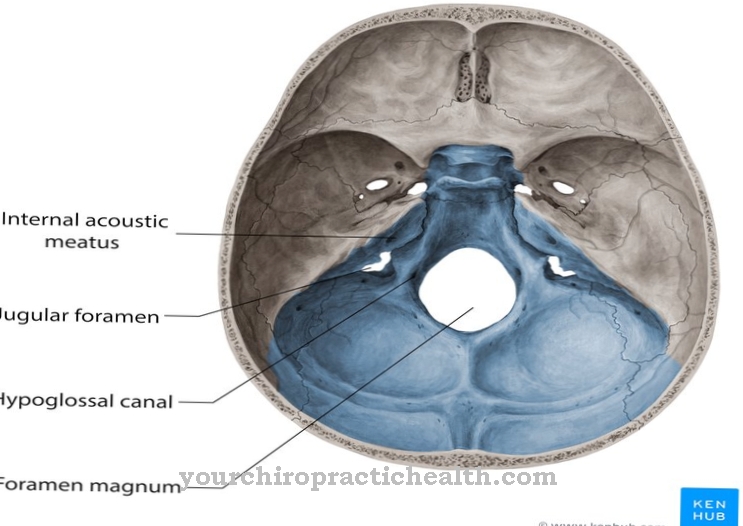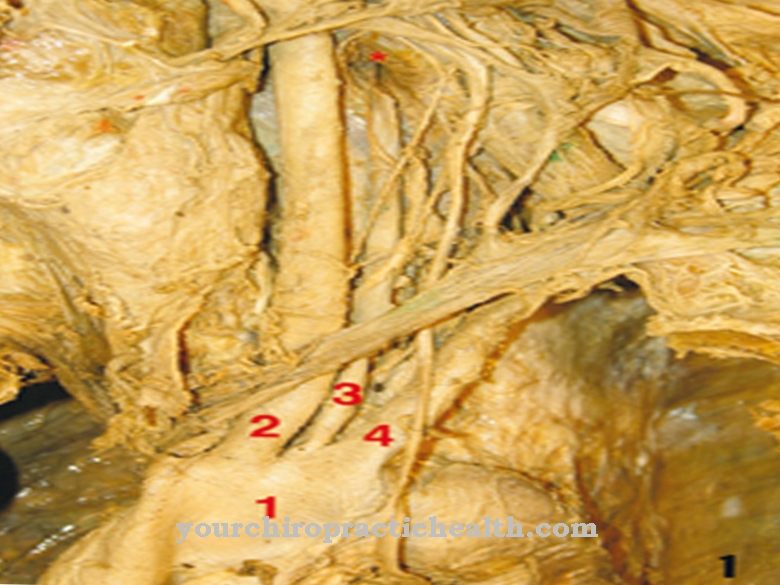Of the Flexor pollicis brevis muscle is a hand muscle with two heads. He flexes his thumb and participates in his adduction. The striated skeletal muscle receives the nervous signals for this from the ramus profundis nervi ulinaris and from the nervus medianus. Damage to the muscle or nerve can result in motor impairments of the thumb, for example in carpal tunnel syndrome or as a result of trauma.
What is the flexor pollicis brevis muscle?
The Latin name means something like short thumb flexor. The “long thumb flexor”, on the other hand, corresponds to the flexor pollicis longus muscle, which is located in the forearm and forms part of the deep muscles there. Like the flexor pollicis brevis muscle, the longer muscle flexes the thumb. In addition, the long flexor pollicis longus muscle also supports the wrist when bending.
The flexor pollicis brevis muscle is a skeletal muscle and has striated fibers that are combined into one muscle fiber. A sheath of connective tissue surrounds the fiber and stabilizes it. Several muscle fibers each form a bundle - several muscle fiber bundles combine to form a muscle. This structure allows the flexor pollicis brevis muscle and other muscles to move dynamically and flexibly.
Anatomy & structure
The flexor pollicis brevis muscle has two origins. The superficial muscle head, also known as the superficial head, arises from the carpal ligament (retinaculum flexorum). The carpal ligament is located at the wrist and stretches over the flexor tendons that are found there.
With its surface, which consists of firm connective tissue, the carpal ligament holds the tendons on the wrist and prevents the flexor tendons from sticking out when the hand is moved.
In addition to the superficial head, the flexor pollicis brevis muscle has a second head, the profundum head. Its origin is divided into the large polygonal bone (Os trapezium), the small polygonal bone (Os trapezoideum) and the head bone (Os capitatum). All three belong to the carpal bones. The superficial head and the profundum head extend from the wrist to the bone, where they attach to the outer sesamoid bone (Os sesamoideum) and the base of the thumb (at the articulatio metacarpophalangealis pollicis).
Function & tasks
The flexor pollicis brevis muscle participates in certain movements of the thumb. The flexor pollicis brevis muscle is controlled by two nerves. The middle arm nerve (nervus medianus) communicates with the head superficiale. Its fibers come from the brachial plexus. The median nerve also controls the movements of the flexor pollicis longus muscle.
The other nerve that innervates the flexor pollicis brevis muscle is the ulnar nerve. Anatomy knows it as the ulnar nerve. In its course the ulnar nerve gives off five main branches, one of which embodies the ramus volaris manu. Two small nerves branch off from this branch: the ramus superficialis and the ramus profundus. The latter pulls into the flexor pollicis brevis muscle and sends motor nerve signals to the profundum head. The flexor pollicis brevis muscle belongs to the skeletal muscles of humans and is subject to voluntary control: the command to contract comes from a motor center of the brain. An exception are reflexes, for example the grasping reflex in babies.
The nerve fibers end in a motor endplate that releases biochemical messenger substances. When these stimulate the membrane of the muscle cells, ion channels open and change the electrical balance of the cell. Biology also describes this change as the postsynaptic endplate potential. It stimulates a membrane system inside the muscle cell, the sarcoplasmic reticulum, to release calcium ions. These are deposited on special proteins, whereupon these slide into one another and shorten the muscle.
On the flexor pollicis brevis muscle, the contraction leads to flexion of the thumb or adduction. In adduction, the thumb moves towards the middle of the hand.
You can find your medication here
➔ Medicines for painDiseases
If the flexor pollicis brevis muscle is not working properly, there may be damage to the muscle or to one of the nerves that innervate the short flexor of the thumb. Direct lesions can occur, for example, in hand injuries.
With nerve paralysis affecting the median nerve, the affected person is no longer able to bend the thumb, index finger and middle finger. Medicine also calls this sign of disease the oath hand, as the position of the fingers is reminiscent of the traditional gesture. The median paralysis does not spread to the other two fingers of the hand, as these are supplied by other nerve fibers. Impairments to the ring finger and the little finger are only possible with additional damage.
The medial nerve contains not only motor nerve fibers that control the activity of muscles, but also sensitive fibers. These pass on sensations such as warmth, cold, pain and pressure to the central nervous system. As part of a paralysis of the medial nerve, this information transfer is also disturbed and the person affected no longer feels anything in these areas of the skin.
However, not every clinical picture that affects the medial nerve leads to a loss of sensitivity. Other sensory disturbances such as paresthesia can also occur. These occur, for example, in carpal tunnel syndrome and manifest as tingling, “falling asleep”, disturbances in temperature perception or a feeling of numbness. In addition, the carpal tunnel syndrome often manifests itself in pain that varies in severity. The syndrome is often caused by overwork - but fractures, obesity, arthritis, diabetes, amyloidosis, bleeding, tumors, edema and other underlying diseases can also be causes.


.jpg)









.jpg)



.jpg)










.jpg)
